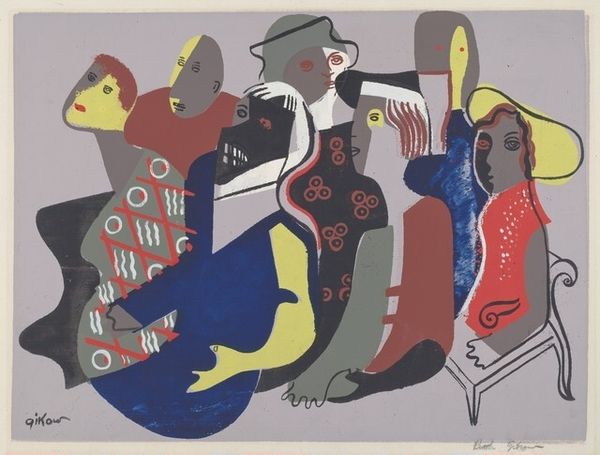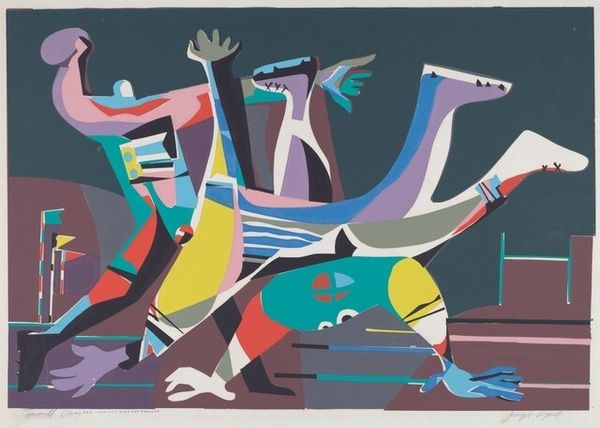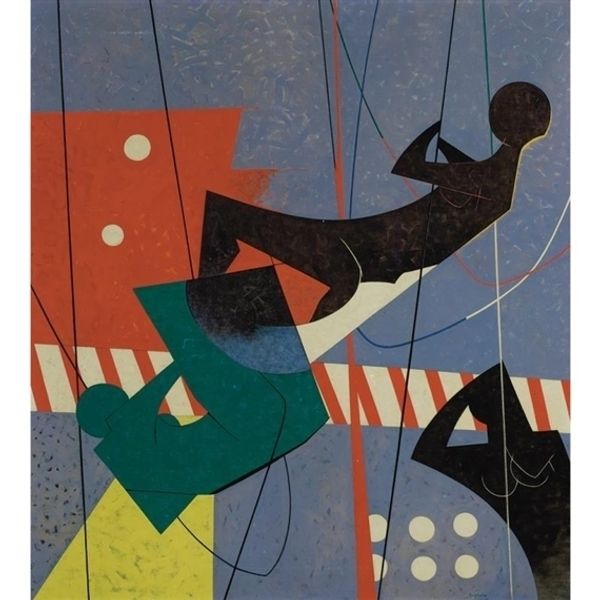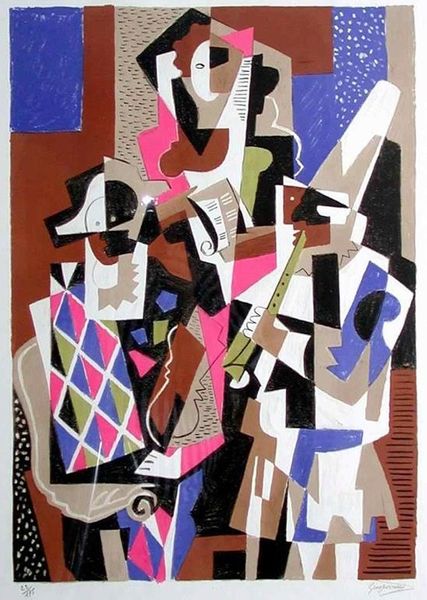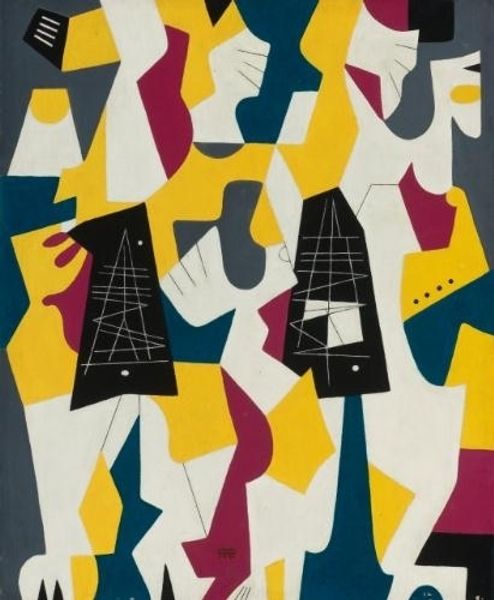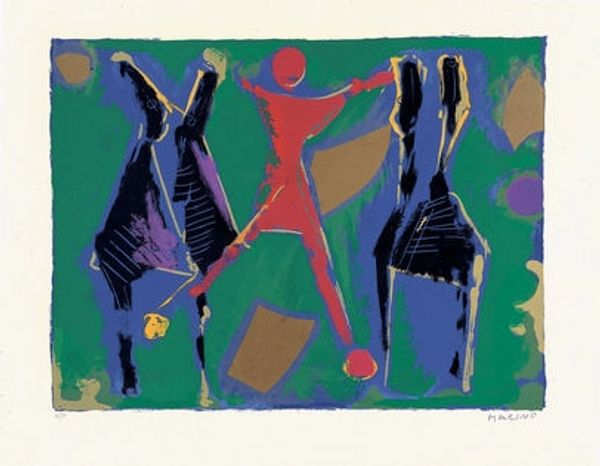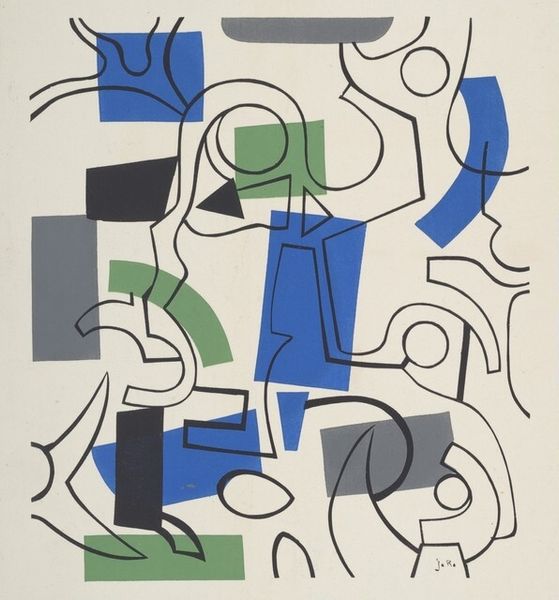
graphic-art, print
#
pop art-esque
#
graphic-art
#
cubism
# print
#
pattern
#
pop art
#
figuration
#
geometric
#
modernism
Copyright: Carlos Merida,Fair Use
Editor: Here we have "La Endecha," a print by Carlos Merida. It’s composed of these fascinating geometric shapes in blue, black and white, vaguely representing figures, but they seem almost to float on the background. What’s your take on it? Curator: This piece pulses with the energy of its time, doesn't it? Mérida, deeply rooted in Guatemalan heritage, embraced modernism yet remained critical of its colonial undertones. Look at how he deconstructs the human form into geometric fragments, almost like dismantling societal expectations. Editor: So you see this cubist approach as a commentary? Curator: Absolutely! Consider the title, "La Endecha" – a lament. Could these abstracted figures represent fragmented identities, perhaps a visual representation of the grief and displacement experienced by indigenous populations during the rise of modernism and ongoing effects of colonialism in Latin America? Do you notice how the cool palette further contributes to the overall melancholic mood? Editor: I see what you mean, it isn't just about aesthetics; it's also charged with the artist's cultural and political viewpoint, a visual expression of historical sorrow and political unrest, rendered with striking graphic sensibility. I’ll never look at this the same way again! Curator: Precisely! Art can become such a potent tool for historical understanding, prompting crucial conversations and intersectional narratives about power, identity, and resistance, don't you agree?
Comments
No comments
Be the first to comment and join the conversation on the ultimate creative platform.
